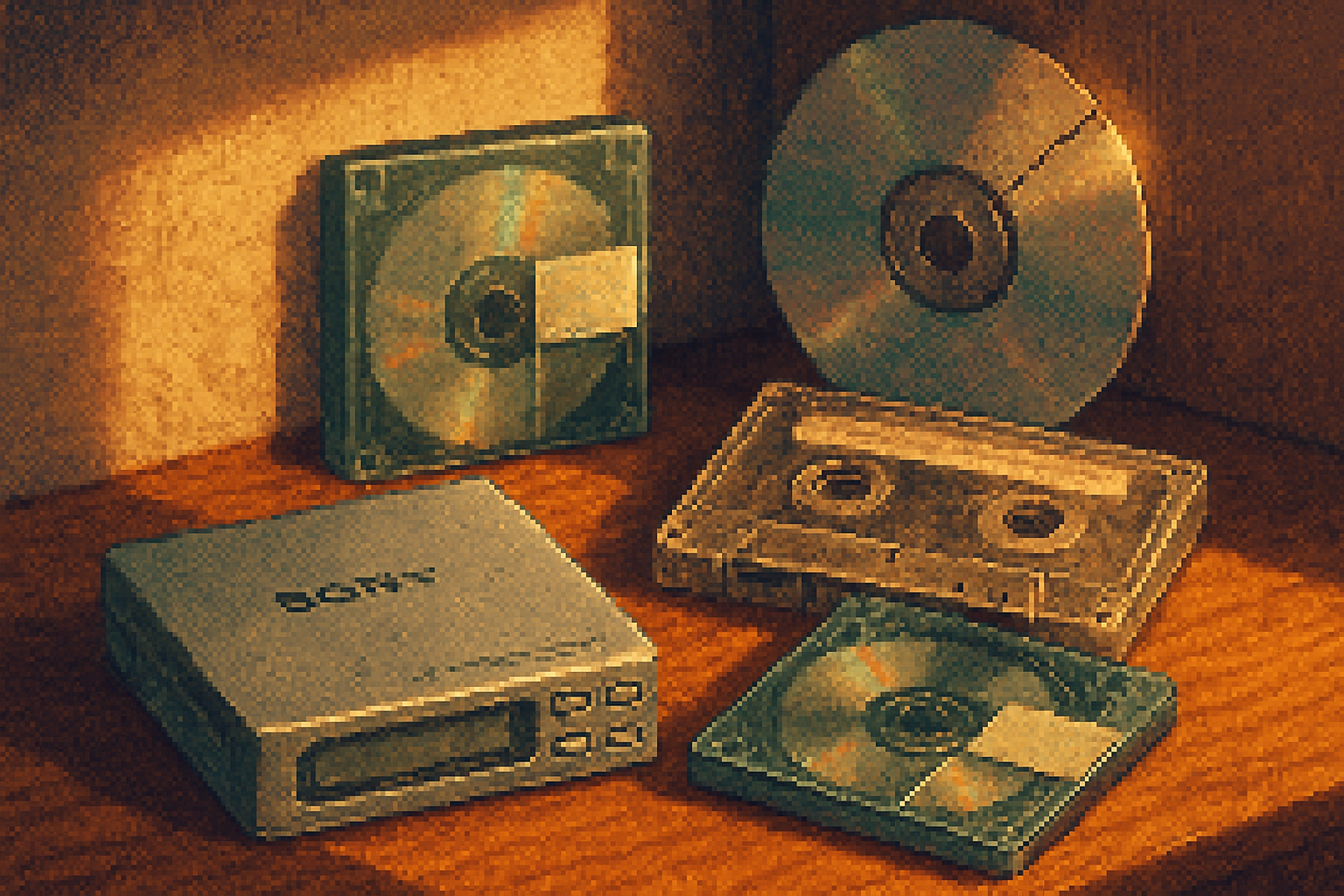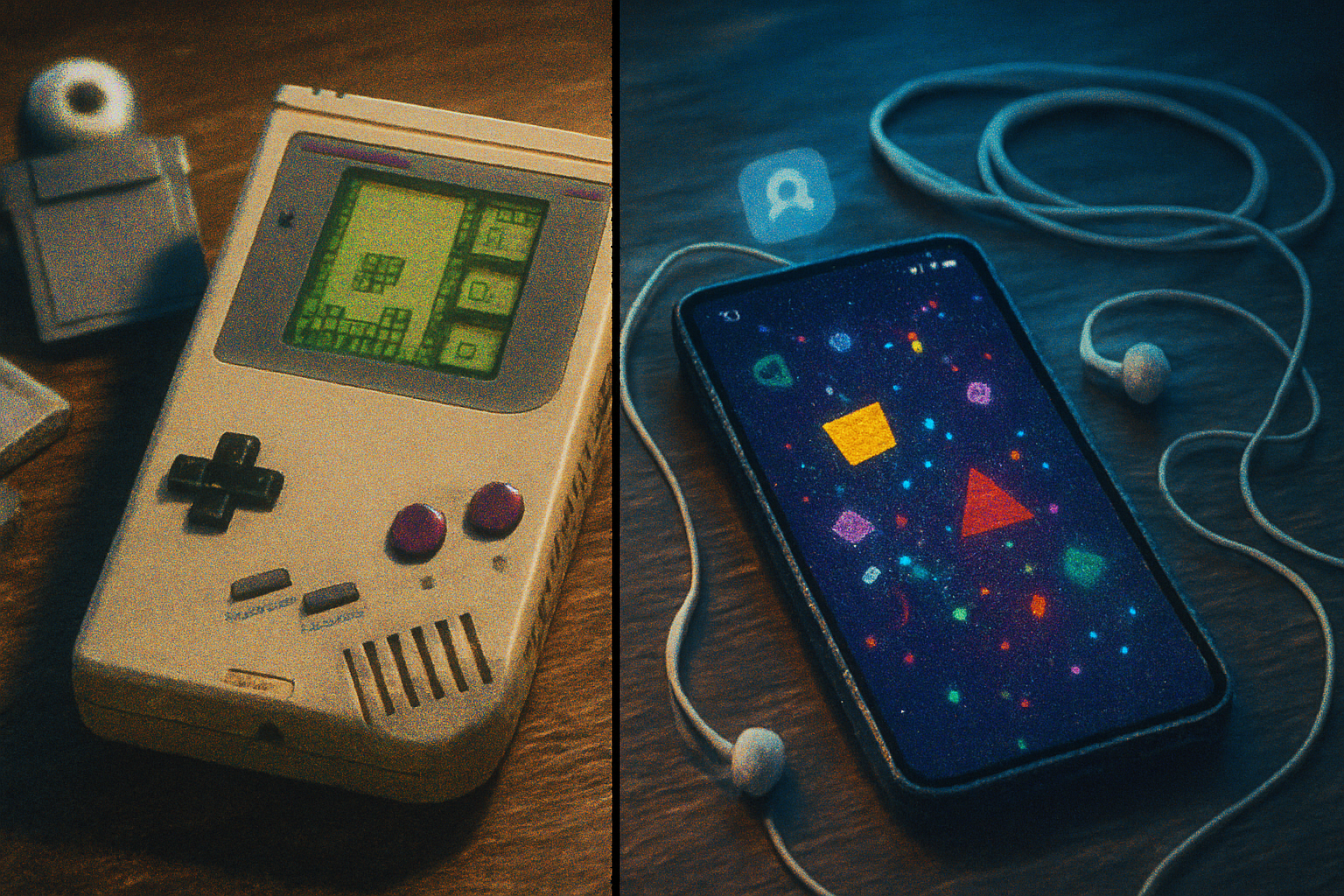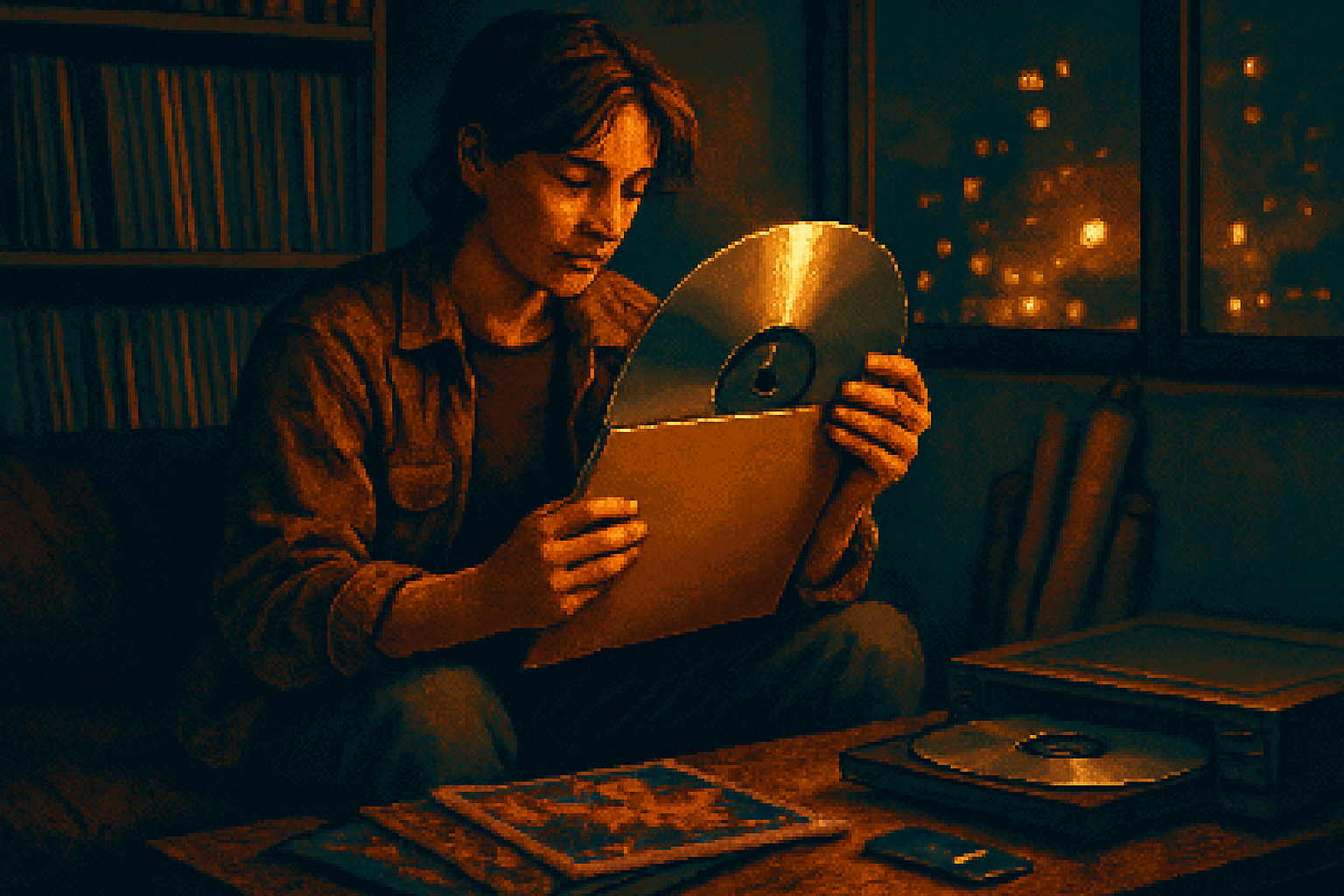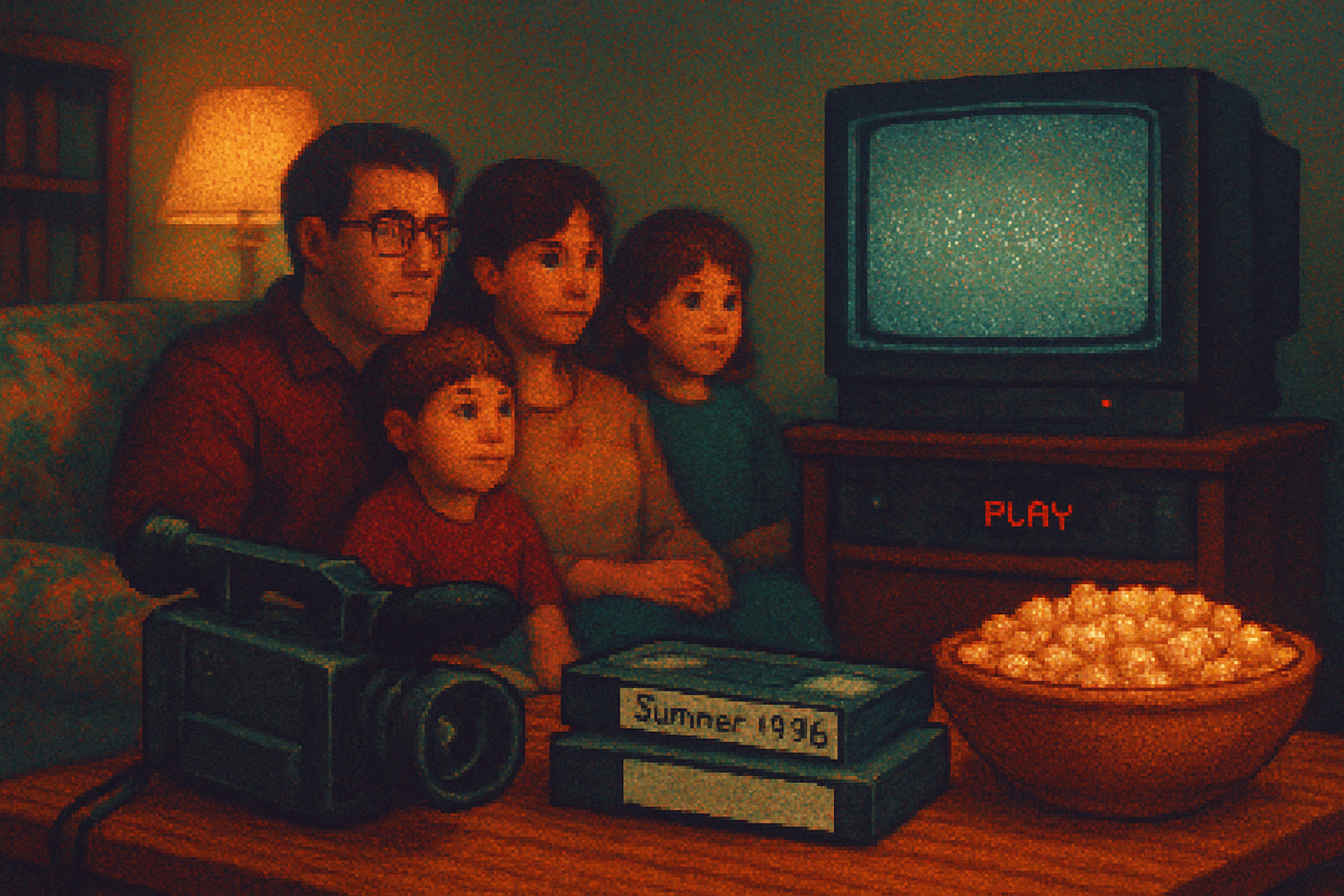· culture · 6 min read
The MiniDisc Revolution: How It Shaped Our Music Consumption Habits
A spirited look back at the MiniDisc - Sony’s bold, weird, and oddly prescient format. How it changed portable listening, recording habits, and taught the industry lessons that still echo in streaming today.

I still remember the first time I held a MiniDisc player. It felt like a prop from the future - glossy plastic, a tiny silver disc with the gravitas of a coin, and the smug confidence of a format that believed engineering could trump habit.
That confidence was not entirely misplaced. The MiniDisc (MD) arrived in 1992 and, for a while, it looked like the heir apparent to the cassette and CD: portable, durable, recordable, and infuriatingly clever. It didn’t win the monopoly on listening. But it mattered. It changed expectations - about portability, editing, and the idea that music could be both physical and mutable.
A short history (the boring facts, dressed in a nicer jacket)
Sony launched the MiniDisc in 1992 as a magneto-optical format using ATRAC compression. It was smaller than a CD, rewritable, and - crucially - designed for portable use. Unlike the linear tape of a cassette, MD offered near-instant access to tracks and robust protection against scratches thanks to its cartridge.
- Launch year - 1992
- Key tech - ATRAC (Adaptive TRansform Acoustic Coding) compression, magneto-optical media
- Selling points - portability, recordability, durable cartridge, quick track access
If you want a fuller technical timeline, Sony’s overview and the concise historical summary on Wikipedia are good starting points: Sony’s MD technology page and the MiniDisc Wikipedia entry.
What the MiniDisc actually did better than the CD (and most cassettes)
The MD’s core innovations weren’t glamorous; they were practical. They tackled the everyday annoyances listeners ignored until they were fixed.
- Instant random access - No more rewinding or fast-forwarding. You could jump to a track as quickly as with a CD player, but within a tiny, pocketable unit.
- Rewritable convenience - Record a concert. Edit out chatter. Rearrange tracks. The MD made on-device editing easy.
- Durability - Portable players survived more drops and temperature swings than fragile CDs and merciless cassette tape.
- Space and weight - For commuters and travelers, the small size mattered. MiniDiscs fit into pockets where CDs could not.
The MD was, in many ways, a stealth tutorial in user-centered design: solve one real pain point and users will forgive a dozen compromises.
ATRAC and the smell of compromise
ATRAC compression was both MD’s secret weapon and its critics’ favorite target. By compressing audio you could store more music in less space - which made MDs smaller and players battery-friendlier - but some listeners found ATRAC’s audio colorations objectionable. Critics called it thin, others couldn’t hear the difference. The truth: ATRAC was a trade-off, and trade-offs are the currency of format wars.
ATRAC mattered because it normalized lossy audio in a mainstream product a decade before MP3 players took off. It taught consumers to accept - even embrace - compressed digital audio, as long as the experience around it was compelling.
The social technology of ‘mixing’ reinvented
Cassette culture had given us mixtapes - a ritual of selection, sequencing, and seduction. MiniDisc didn’t kill that ritual; it liberated and rationalized it.
- Editing - You could trim the start and end points of a recording precisely. The MD was the first widely accessible format that let you be both DJ and archivist on the go.
- Portability of creation - With portable MD recorders, amateurs could make decent-quality field recordings, interviews, and live captures. It lowered the barrier to entry for creators.
- Metadata and track indexing - The idea that a recorded tape could be scrubbed into discrete, named tracks planted early seeds of how we later treated digital libraries. (It’s easier to love a song when you can find it.)
In short: MDs quietly changed how people thought about personal music libraries - as editable, named, and portable collections rather than static artifacts.
NetMD and the flirtation with true digital transfer
The early 2000s brought NetMD, Sony’s attempt to bridge MD with the burgeoning world of MP3s and computers. NetMD allowed transfers between PCs and MD players, but it came with DRM shackles and awkward workflows. The technology showed intent: digital interoperability matters. The execution was a reminder that good ideas can be strangled by business models.
NetMD’s legacy is twofold:
- It accelerated user expectations for digital transfer and metadata management.
- It demonstrated how DRM and proprietary approaches can smother otherwise promising features.
If MD had come with simple, open transfer standards, its lifespan might have looked very different.
Why the MiniDisc lost (and why that loss is instructive)
Predictable reasons killed the MD: the rise of MP3 and file-sharing, the ubiquity of cheap flash memory players, and Sony’s stubbornly proprietary instincts. But the death wasn’t a failure of concept. It was a failure of timing and strategy.
- Market timing - Portable flash memory and hard-disk-based players got cheaper fast. Storage density and convenience became decisive.
- Proprietary friction - Sony’s tight control over metadata and transfer protocols made it harder for the MD ecosystem to interoperate with emerging digital ecosystems.
- Network effects - Once MP3 players and Napster-style services created massive user-generated libraries, physical media of any kind lost momentum.
The MD era teaches us that innovation without openness is fragile. Technology wins when it’s useful and when it plugs into other useful things.
Nostalgia and the tactile impulse
We romanticize the MiniDisc because it was tangible, fiddly, and required intention. There’s a melancholic dignity to formats you can hold - even if they came in cheap plastic cartridges. Physical formats demand choices: which disc to carry, which tracks to burn. Choice requires taste and effort. That curation felt like ownership.
This nostalgia is not merely sentimental. It’s a critique of streaming’s effortless abundance. Streaming gives infinite choice and zero friction. That’s liberating. It’s also anesthetic. When everything is available, everything is also, in a sense, less chosen.
Lessons from the MiniDisc era (for designers, companies, and listeners)
- Design solves friction. The MiniDisc succeeded where it removed real pain points - instant access, portability, recordability.
- Openness beats brilliance. Proprietary bottlenecks (DRM, closed transfer protocols) limit a format’s life more than technical inferiority.
- Physical tangibility has value. There’s a human appetite for objects that anchor memories, rituals, and identity.
- Compression is not moral failure. ATRAC normalized compressed listening; the moral question is about trade-offs and transparency, not purity.
- The middle is dangerous. Formats that sit between eras (like MD between analog tape and streaming) are often most vulnerable unless they push hard into one side or the other.
A final note (short, sharp, and honest)
The MiniDisc didn’t win. It didn’t need to. It taught the industry several lessons: that people wanted portable, editable music libraries; that compression could be tolerably good; and that consumers will reward convenience. Those lessons echo in every smartphone, cloud locker, and streaming playlist today.
If you miss the MiniDisc, you’re not missing the gadget so much as a posture - the pleasure of curating a small, intentional world of sound. The modern equivalent exists in playlists and sync’d devices. But playlists are ethereal; MiniDiscs were objects you could slap onto a shelf and show off. They made music into a thing with edges.
If history forgives the MiniDisc anything, it should be this: it was a transitional miracle disguised as a commercial oddity. It didn’t survive the shift to pure digital; it made that shift thinkable.
References
- Sony - Overview of MD technology -
- MiniDisc - Wikipedia - https://en.wikipedia.org/wiki/MiniDisc



